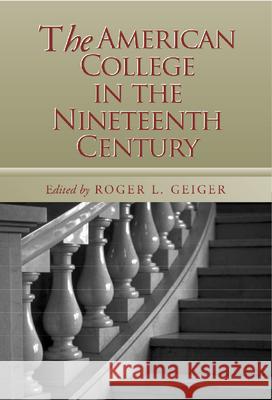The American College in the Nineteenth Century » książka
The American College in the Nineteenth Century
ISBN-13: 9780826513649 / Angielski / Miękka / 2000 / 368 str.
The American College in the Nineteenth Century
ISBN-13: 9780826513649 / Angielski / Miękka / 2000 / 368 str.
(netto: 208,47 VAT: 5%)
Najniższa cena z 30 dni: 182,87
ok. 16-18 dni roboczych
Dostawa w 2026 r.
Darmowa dostawa!
At the end of the eighteenth century, just eighteen colleges existed in the United States, with an average enrollment of fewer than seventy. One hundred years later, over 450 American colleges and universities boasted enrollments up more than one hundredfold. The role of educational institutions in the life of the nation had been utterly transformed.As the bridge between the two eras, the nineteenth-century college has been among the most controversial subjects in the history of American higher education. While earlier historians portrayed the -old-time- college as an impediment to modernization, later scholars affirmed the broad role of the colleges in the education of the American people.The American College in the Nineteenth Century combines the best recent scholarship with an interpretive introduction to provide a fresh view of the development of American colleges. The contributors consider these institutions within four new contexts: first, the dramatic transformation in the college students' experience from oppressive discipline to relative freedom; second, the regional variations among the developing American colleges (for example, a South dominated by state colleges, a Midwest by denominational schools); third, the revolution in the century's third quarter as colleges became multipurpose institutions; and fourth, universities that became dominant by the end of the century, incorporating rather than displacing the colleges.Innovative in its examination of the nature and function of these uniquely American institutions, The American College in the Nineteenth Century is a vital addition to the scholarship of the period.Contributors: David B. Potts, Leon Jackson, Julie Ann Bubolz, Michael Sugrue, James Findlay, Margaret A. Nash, Peter Dobkin Hall, James Turner, Paul Bernard, and Willard J. Pugh.











